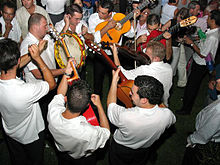
Performance art appeared in the 1960s. Since then, it has become a popular medium for artists to explore themes of personal identity and social status. Performance art is a term that was created to describe this form of art. Yves Klein and Gina Pane are three examples of artists who perform. Roselee Goldberg is another example.
Yves Klein
Yves Klein is a painter who used body movement to create his works. His work was shown for the first time in 1957 during an international competition held by Gelsenkirchen. He was part of the group known as ZERO which also included Otto Piene, Heinz Mack.
Klein designed Raum der Leere, a walk-in immersive installation, in Krefeld, Germany, in 1961. Inspired by Le Vide in France, the installation featured a 285x442 cm room painted white and lit by neon lamps. The exhibition documents this performance through photographs and drawings.

Yves Klein was not only a performer, but he also studied judo as a youngster. To master this art form, he traveled to Japan to earn a fourth-dan black-belt. This training had a profound impact on his career and life. He later wrote a book on the art form titled Les Fondements du Judo.
Gina Pane
Gina Pane (French-Italian-born artist) was a French performer and installer. She was one if the few female 1970s artists to work with the human anatomy, and she used it in some of the most extreme ways. She produced photographs and sculptures that captured her meticulously planned actions. Her use to the body as an artistic instrument was particularly sensitive, as it highlights vulnerability in women.
In her early work, Pane combined images into montage-like scenes. These scenes were staged to allow the viewer to experience the emotional depth of a performance without actually seeing it. This work, which is a form of performance arts, was remade in many ways by Marina Abramovic in 2005.
Roselee Silverberg
RoseLee Goldberg is an art historian, curator, author, and performer. She is also the creator of Performa, a New York City annual performance art festival. She is a specialist on modern performance art. She was born in Durban in South Africa, and has studied fine arts in London. Goldberg was previously employed at the Gulbenkian Museum of the Royal College of Art. Her support for artists like Marina Abramovic, JeanneClaude, and Christo was a hallmark of her work. She also designed and curates performance programs for museums.

Goldberg is the author of LiveArtSince 1960, a book about the history of performance art. She was the founder of PERFORMA, a non profit organization dedicated to visual art performance in the 21st century. She has a degree from the Courtauld Institute of Art.
FAQ
What can pop culture teach us about ourselves?
Our society today is more concerned with material goods than everything else. This is particularly true for young people. They spend hours each day staring at screens. They spend hours looking at screens, playing video games, and surfing the internet. They lose focus of school work because they are constantly distracted by these distractions. This leads to them failing classes.
We live in a world where everyone wants to fit in. That means being popular. Popularity depends on having money, clothes, and other possessions. Some people do this by doing things that aren’t right.
We have become dependent on technology. All information is available to us thanks to technology. Unfortunately, not all information can be trusted. There are many false rumors floating around the Internet. These rumors quickly spread because people share them through social media. It's easy for people to post things without checking if they are true.
People have lost the ability to think critically. They believe whatever they read on the Internet. They believe what they read in magazines or on TV. They stop thinking for their own sake. They follow the crowd instead.
We lose control when we rely on other people to tell us what's up. Pop culture teaches you to depend on others. It can also make us lazy. While the truth is often out there, we don't always know it.
How can we prevent the dangers of pop-culture?
First, it is important to recognize when pop-culture influences us. We must then make sure we aren't being influenced by pop culture. These are some tips to help you avoid negative influences.
-
Avoid watching violent TV shows like Game Of Thrones.
-
Do not spend too much time on the Internet. Read books instead.
-
You should watch less TV. Spend your time doing activities that are healthy.
-
Take care what you post online. Once comments are posted, you cannot delete them.
-
Check that websites you visit remain safe. Before you give out any personal information, check the websites.
-
Do not allow anyone to force you into doing anything dangerous.
Talk to an adult if you feel like you are becoming dependent on pop culture. You can call your local library or the National Center For Missing & Exploited Children (1-800-THE-LOST).
What is popular music culture?
Popular Music Culture takes many forms.
Popular music culture can be defined by its use certain types of music (e.g. rock, jazz) or lyrics. It also includes visual media, like television, fashion, advertising and film, that have an impact on the careers of artists and public perception.
It's also all about how fans interact their favorite artists.
A key element of popular music culture are the "superstars", which are musicians who have achieved fame or fortune.
These legends transcend genres and are cultural icons. Their success has influenced popular music's evolution.
Some other elements of popular music culture are:
* The rise recording technology – from acoustic instruments up to electric guitarists and microphones.
* The inventions of the record player, the radio and other electronic devices.
* The birth and rise of rock & roll.
* The introduction of TV and film;
* The birth of MTV/VH1;
* The creation the internet.
Why is pop music so beloved?
Pop music is very much loved for its fun and joy! Pop music makes you happy and gives you a sense of freedom. Pop music allows people to be free from any limitations and think about only themselves. They don't have worry about what people think. Pop music is very popular because it doesn't have to worry about what other people think. People like listening to songs that make them feel good. Turn on the radio to hear upbeat music if you're feeling low. You may find yourself singing along. Pop music is a success because of this.
Who first coined the term Pop Music
Invented by Frank Zappa. Pop music was the name he used to describe his music.
He said that he wanted music to appeal to everyone. Pop music was what he called his music.
Zappa also invented the phrase "You Know It's Pop when ..."", which signifies that something is popular if there are many people who enjoy it. Michael Jackson's Thriller record is one of the most successful.
Zappa's definitions of pop music are different than the current. Pop music can include all music. Back then, pop music was limited to certain types of music.
How did pop culture develop?
Technology was key to the rise of popular culture. It evolved as people became mobile. The invention of the radio made mass communication possible. This enabled the invention of the radio, which led to the development of television. The internet was born from this.
People started using computers at home and were exposed to computer games. These games were played on consoles like the Nintendo Wii and Sony Playstation 3. These games can be downloaded online for free. Many youngsters now choose to play videogames over watching TV.
Video games are very common among children and teens. You can play them alone or with your friends online. Call Of Duty games and Grand Theft Auto have a lot of violence. Some parents are worried about their children playing these video games. Some people find it thrilling to see what happens when a character is killed.
Music videos are another way youth can be influenced by pop culture. They provide information about celebrities and current trends. They are very popular with young people. Music is an integral part of our lives.
Artists often use special effects to enhance music videos. Rappers often use makeup and hair wigs to enhance their looks. Others musicians go through extreme physical challenges in order to showcase their bodies. Many singers sing while wearing costumes.
Today, there's so much choice in music. You can listen to anything you want. But this isn't always good news. Music can sometimes encourage violence. People can get upset when they hear certain lyrics or words. Sometimes they even commit crimes.
50 Cent is a recent example of this. His song Get Rich Or Die Trying features a line: "I'm going to shoot a motherfucker down / I don't know why but I just might." When someone heard this song, they thought it meant that he would kill someone. He was threatened by a man who called him. 50 Cent then changed the lyrics. It now says, "I'll shoot one bitch down/ I don’t know why, but I just might."
Popular culture is essential. We must understand its effects on us. If we don't, we won't be able to protect ourselves against its adverse effects.
How did pop music come into being?
It was an accident. It was an accident. Someone accidentally knocked the piano over as they were playing around on New Years Eve in 1920.
The recording company liked what it heard and decided that the single would be released.
This was the first single to be recorded.
Pop music has been the most popular form today of musical entertainment.
Statistics
- In 1987, US films captured 56% of the European film market. (socialsci.libretexts.org)
- Yet a Nielsen study shows they account for 42% of the country's most-watched content on streaming services. courtesy Nielsen (npr.org)
- For example, the term hater meaning someone who strongly undermines or criticizes others, often due to pathetic jealousy, likely emerged from hip hop culture, such as the term playa hateras, used by influential rapper Biggie Smalls as early as 1995. (simplicable.com)
- According to Kathryn Sorrells (2013, pp. 142-144), there are several ways that we can become informed consumers of popular culture. (socialsci.libretexts.org)
- Less than a decade later, that statistic rose to 90% (Dager, n.d.). (socialsci.libretexts.org)
External Links
How To
What is pop culture you can access via media technology
It's all around us: popular culture. It is everywhere. Books, music, movies, TV shows, videos, games, social networking sites, and so on.
Popular culture influences our lives. What we read in magazines, hear on the radio and see on TV influences our daily lives. We watch TV and video games, shop with our friends, have parties, meet new people online, and spend a lot of time surfing the Internet.
However, just because something is popular does not mean that it is good for business.
This is where media technologies come in. They offer tools that enable us to connect with consumers and access popular culture.
Media technologies can be used to:
-
Content about products and/or services
-
Engage with fans by introducing them to their favorite authors, actors, or musicians
-
Promote brands and business
-
Advertisement
-
Track consumer trends
Popular culture is essential if your goal is to create brand awareness, attract new customers, increase sales, and boost customer loyalty. And you can do so by accessing media technologies.